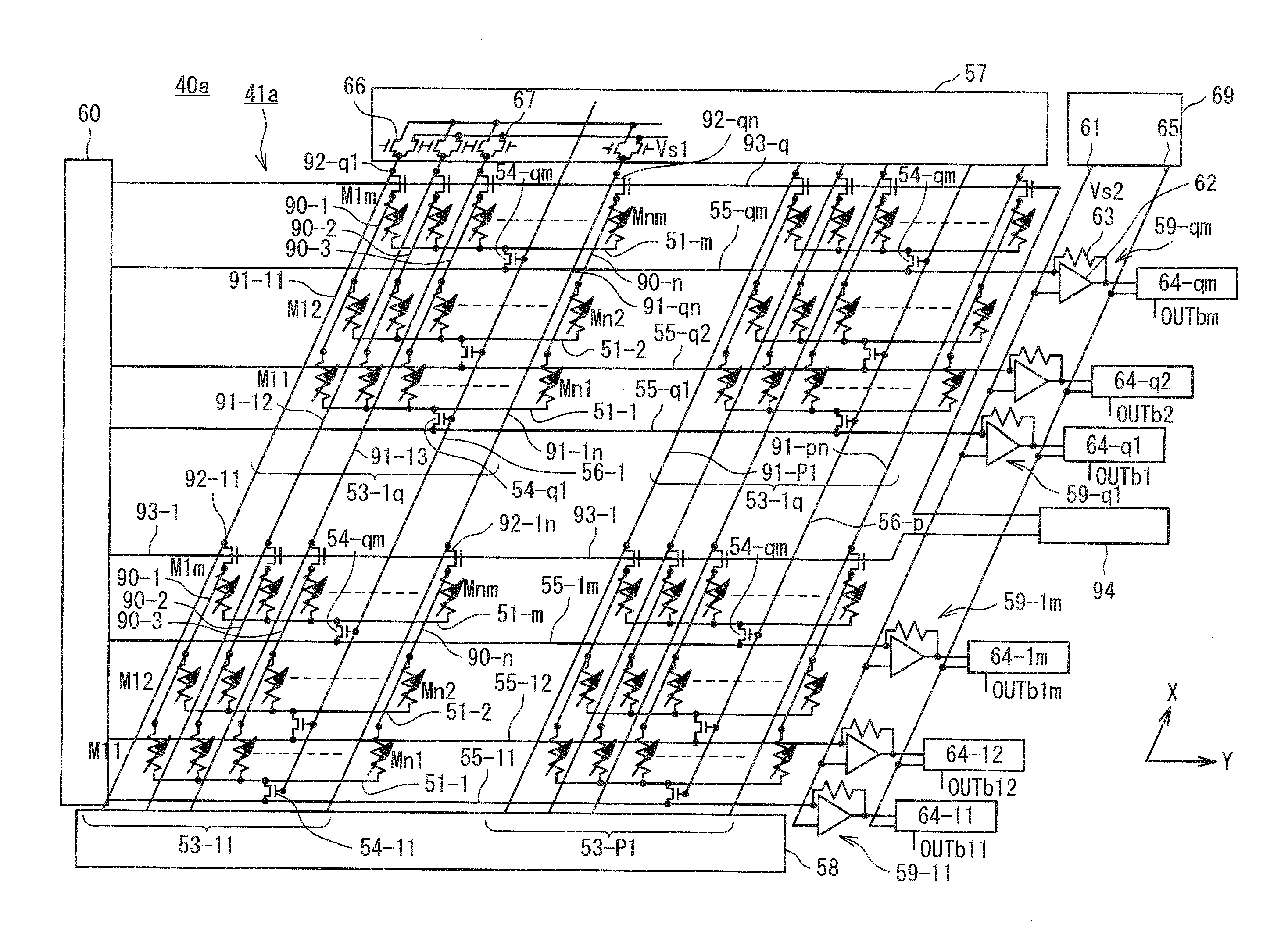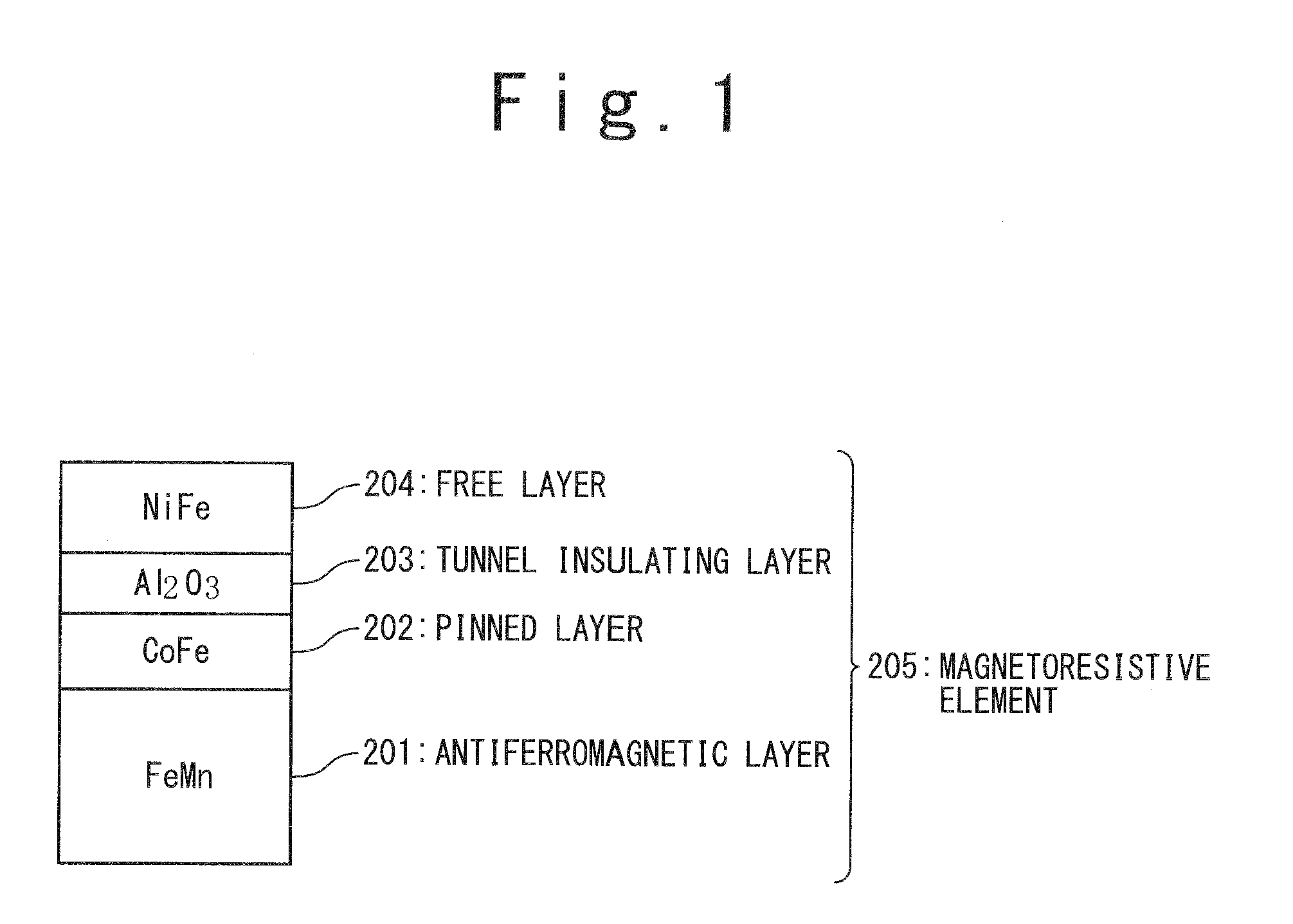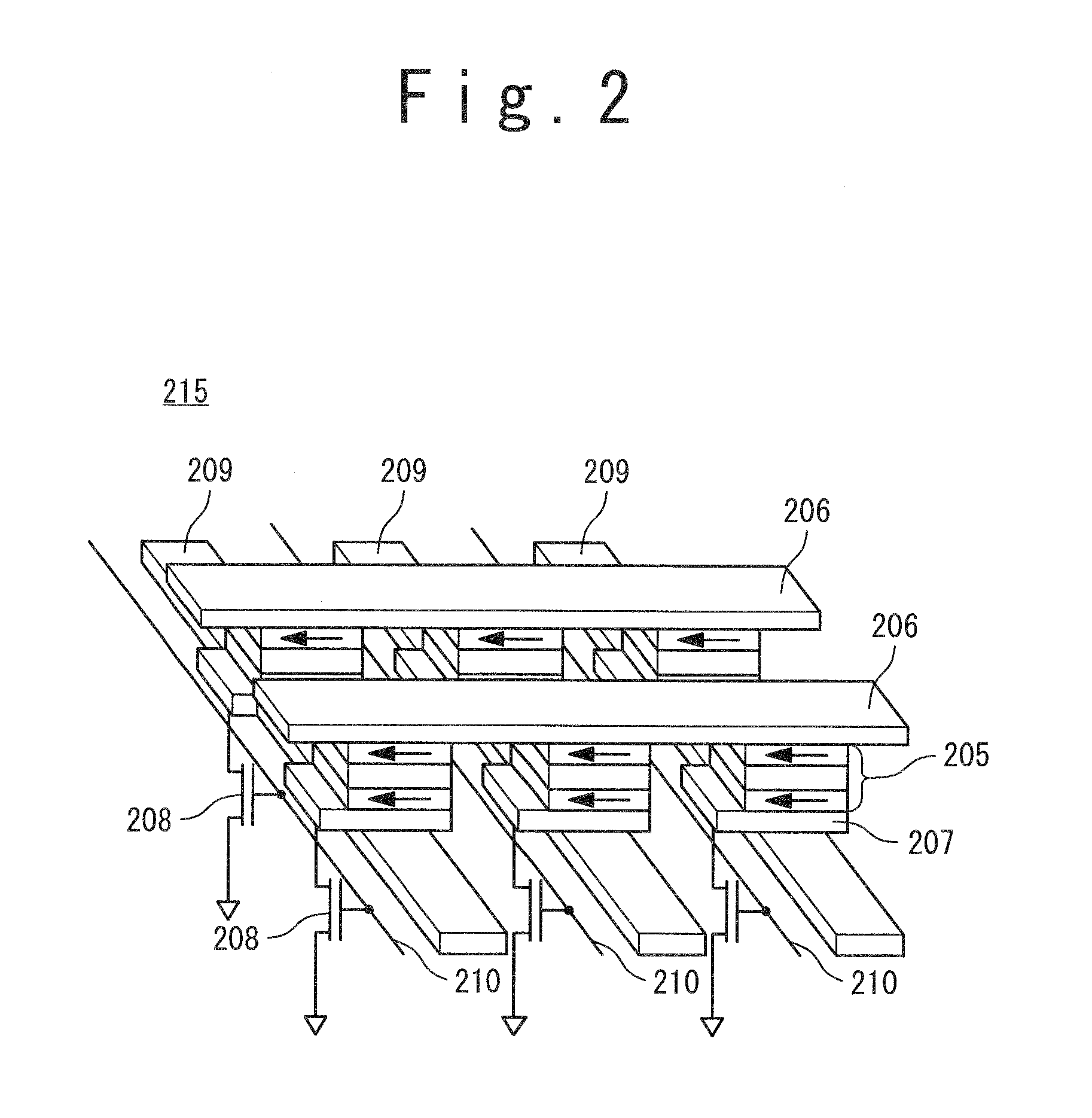Semiconductor storage device and operating method of the same
a technology of semiconductor storage and operating method, which is applied in semiconductor devices, digital storage, instruments, etc., can solve the problems of output shifting, difficulty in accurately evaluating the resistance value of one storage element, and difficulty in employing it for making a higher-capacity memory with a hyperfine structure. , to achieve the effect of high integration, high speed reading, and high capacity
- Summary
- Abstract
- Description
- Claims
- Application Information
AI Technical Summary
Benefits of technology
Problems solved by technology
Method used
Image
Examples
first exemplary embodiment
[0062]The first exemplary embodiment of the semiconductor storage device of the present invention will be described below with reference to the attached drawings.
[0063]FIG. 4 is a block diagram showing a configuration of the first exemplary embodiment of the semiconductor storage device of the present invention. A semiconductor storage device 20 includes a resistive storage element array 21, a plurality of evaluating circuits 8-1 to 8-m (hereafter, m is a natural number), an evaluation control circuit 9 and a reading control circuit 10.
[0064]The resistive storage element array 21 includes a plurality of unit blocks 4-1 to 4-p (hereafter, p is a natural number). Each of the plurality of unit blocks 4-1 to 4-p includes a plurality of memory cells M11 to Mnm (hereafter, n is a natural number), a plurality of word lines 2-1 to 2-n, a plurality of bit lines 5-1 to 5-m, a plurality of assistant bit lines 3-1 to 3-m, a plurality of switch elements 6-1 to 6-m, and a switch element control l...
first example
[0084]The exemplary embodiment of the present invention will be described below using an specific example. FIG. 7 is a schematic configuration view showing a first example of the semiconductor device of the present invention. FIG. 8 is a main sectional view of a TMR element 52 in FIG. 7. A semiconductor storage device 40 includes a resistive storage element array 41, a plurality of sensing amplifiers 64-1 to 64-m, an evaluation control circuit 69, a word line control circuit 57, a word line termination circuit 58, a bit line termination circuit 60, and a plurality of potential setting circuits 59.
[0085]The resistive storage element array 41, unit blocks 53-1 to 53-p, memory cells M11 to Mnm, the TMR element 52, a plurality of word lines 50-1 to 50-n, a plurality of bit lines 55-1 to 55-m, a plurality of assistant bit lines 51-1 to 51-m, a plurality of reading transistors 54-1 to 54-m, a block selection line 56, and sensing circuits 64-1 to 64-m correspond to the resistive storage el...
second example
[0099]FIG. 7 is the schematic configuration view showing a second example of the semiconductor device of the present invention. FIG. 11 is a main sectional view of the TMR element 52 in FIG. 7. The semiconductor device in the second example is substantially equal in the circuit configuration to the first example. However, the configuration of the storing element 52 and the operation of the word line control circuit 57 and the writing method are different.
[0100]In the storing element 52, a lower wiring layer 81 (Ta: 10 nm), an anti-ferromagnetic layer 82 (PtMn / NiFe: 10 nm), a pinned layer 83 (CoFe: 2.4 nm), a first tunnel insulating layer 84 (Al2O3: 2 nm), a free layer 85 (CoFe: 2.4 nm), a second tunnel insulating layer 86 (Al2O3: 2 nm), a write magnetic layer 87 (NiFe: 5 nm), and an upper wiring layer 88 (Ta: 10 nm) are laminated in this order from the lower layer.
[0101]The operating method of the semiconductor storage device 40 will be described below exemplifying the case of using...
PUM
 Login to View More
Login to View More Abstract
Description
Claims
Application Information
 Login to View More
Login to View More - R&D
- Intellectual Property
- Life Sciences
- Materials
- Tech Scout
- Unparalleled Data Quality
- Higher Quality Content
- 60% Fewer Hallucinations
Browse by: Latest US Patents, China's latest patents, Technical Efficacy Thesaurus, Application Domain, Technology Topic, Popular Technical Reports.
© 2025 PatSnap. All rights reserved.Legal|Privacy policy|Modern Slavery Act Transparency Statement|Sitemap|About US| Contact US: help@patsnap.com



